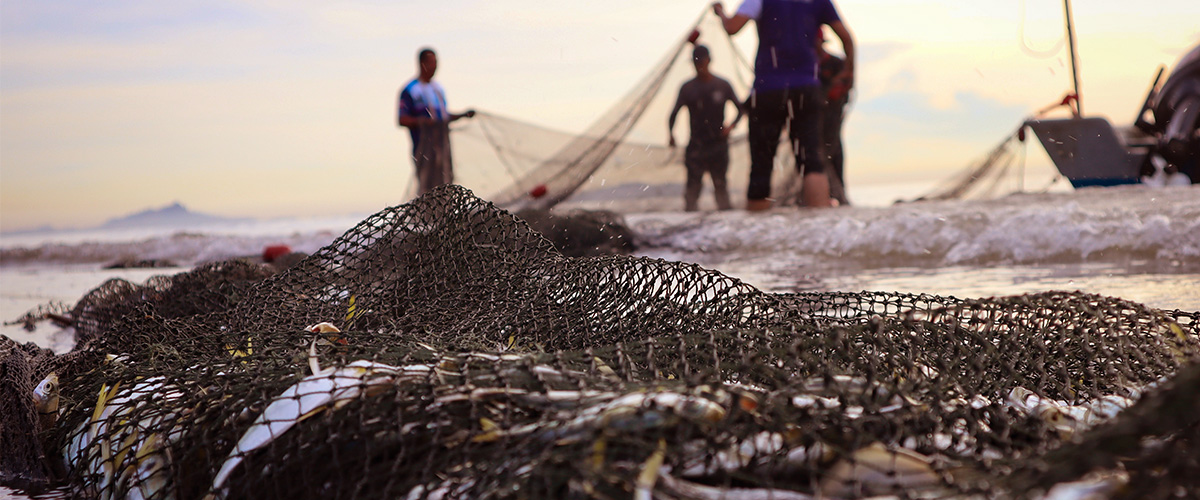April 1st marks the beginning of the Maryland blue crab season, the highly anticipated first sign of warmer days and delicious seafood feasts ahead.
Just as the blue crabs are beginning the journey from the Chesapeake Bay to our plates, the seafood industry is also navigating a complex landscape in 2025 shaped by evolving consumer behaviors, economic pressures, and shifting trade policies. As one of the largest importers of seafood globally, the U.S. market plays a pivotal role in the industry’s growth and resilience. Atradius Underwriter, Duy Tran looked at the latest in the seafood sector. Our most recent blog on the Agriculture industry as a whole can be found here.
Economic, Energy, and Trade Policies
The global seafood market is expected to grow significantly over the next decade, from $400 billion in annual sales in 2024. The U.S. market is crucial to this expansion. However, short-term obstacles such as a slowing economy, persistent inflation, and declining disposable income have impacted growth in the U.S., Europe, and China. Alternatively, countries like Norway, Turkey, Brazil, and Indonesia have shown higher growth, indicating future supply chain shifts.
Seafood’s complex supply chain requires constant monitoring and is highly susceptible to weather events and energy price fluctuations. Leading companies have mitigated these potential risks by creating strong, controlled value chains from farming and fishing, to processing and distributing. Tariffs remain a concern, with immediate effects on the entire supply chain, stifling spending and planning. Even though the current tariffs on seafood are small, companies are still being cautious. In the long run, historical trends suggest that initial fears of tariffs tend to subside within 6-9 months.
Consumer Behavior
A U.S. Consumer Survey by Category Partners for the 52-week period ending December 28, 2024, provides insights into consumer behavior (Nielsen IQ). Facing higher grocery bills, consumers are increasingly substituting beef and chicken for seafood. Consumer confidence hit a low in June 2022, and while seafood prices have risen since 2021, consumption volumes have gone down. However, prices have somewhat stabilized, with fresh products declining by 0.4% and frozen products by 3.6%.
Key trends include:
- Higher consumption of fish compared to shellfish.
- A change from fresh to frozen seafood due to price and convenience.
- Regional preferences, with the South consuming the most seafood and the Midwest the least.
- Fresh seafood is preferred for its quality, flavor, and health benefits, while frozen seafood is valued for its shelf life, convenience, and lower price.
Consumers choose seafood over meat for its flavor, health benefits, and versatility, while price remains the main deterrent. There are opportunities for growth in promoting seafood’s environmental benefits, variety, and appeal to younger consumers through quality and packaging.
Get in Touch
Looking For a FREE Quote?
Obtaining a free Trade Credit Insurance quote or just some more information is fast and easy! Get in touch with us today.
Get Started Call 800-822-3223Sustainability & Traceability
The National Marine Fisheries Service (NOAA) began implementing electronic monitoring systems (EM) in 2018 to replace human-at-sea monitors. Currently, fourteen EM systems are operational in the U.S., with more planned over the next five years. Countries like Costa Rica and Peru have voluntarily adopted EM practices, particularly in tuna fishing.
EM systems include sensors installed on vessels, GPS systems, and tags on caught products. The goals are to reduce by-catch, monitor fishing conditions, increase traceability, and enhance product quality and sustainability. Providers are continuously developing algorithms to optimize the process, with AI still in its beginning stages. Smaller producers can leverage EM to differentiate their products.
Challenges include:
- Implementation costs and opportunity costs of keeping vessels in port.
- Space and electric component requirements, especially on smaller vessels.
- Market reactions, as prices have not yet rewarded these efforts.
- Privacy concerns, with fishermen and companies wary of data processing and access.
Conclusion
The U.S. seafood industry faces a dynamic environment in 2025. While economic and trade challenges persist, the industry’s resilience and adaptability offer a cautiously optimistic outlook for growth. By understanding and addressing consumer behaviors, leveraging strong supply chains, and embracing sustainability and traceability practices, the seafood sector can navigate these complexities and thrive in the years ahead.


